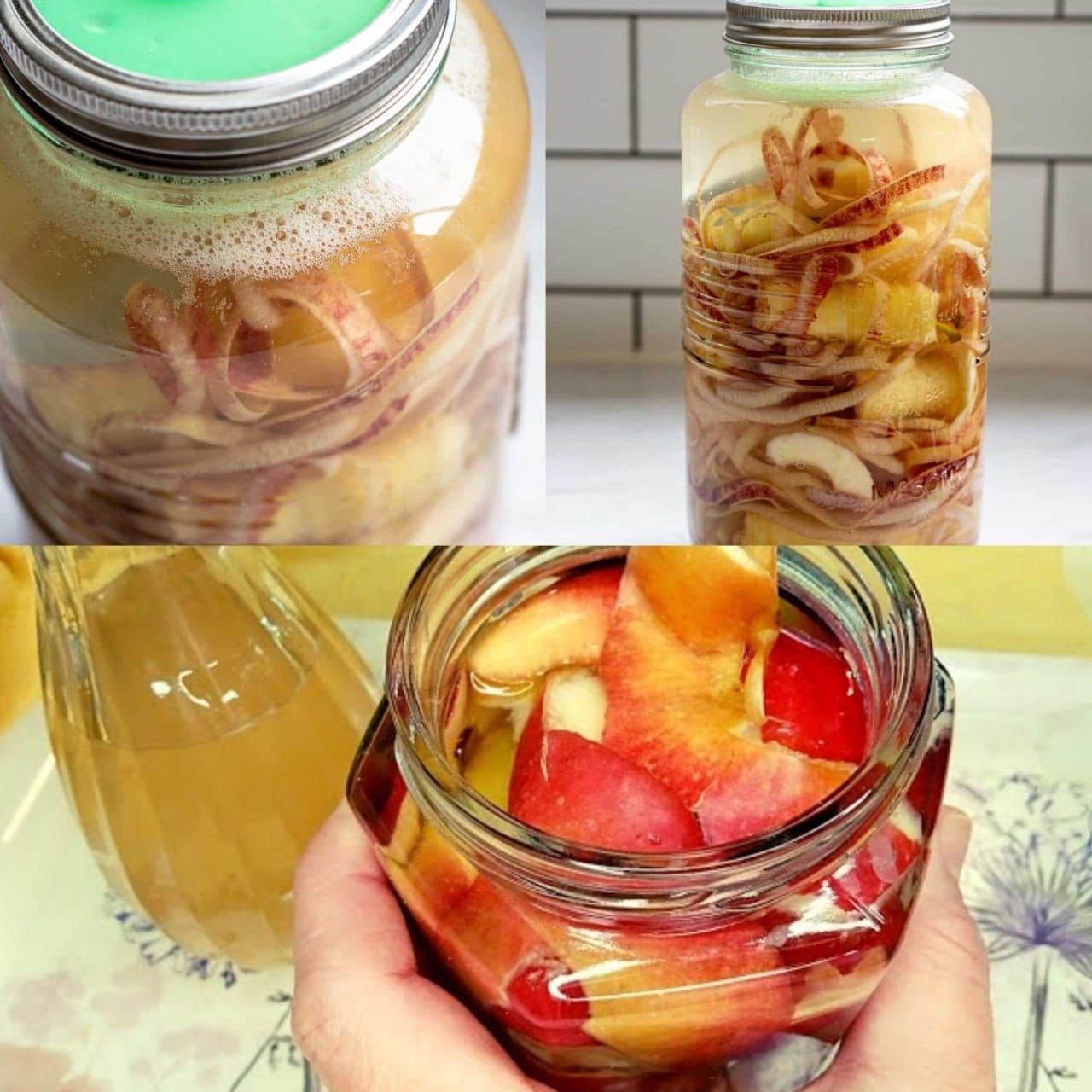Cheesecloth or coffee filter
Rubber band or string
Instructions:
Prepare the Apples:
Collect the peels and cores from approximately 6 large apples. Make sure the apples are organic if possible, to avoid pesticides and chemicals. Wash them thoroughly before peeling and coring.
Start the Fermentation Process:
Place the apple peels and cores in a clean, large glass jar.
Dissolve the sugar in a bit of warm water and pour it over the apple scraps. Sugar aids the fermentation process, but you can reduce the amount or leave it out if you prefer a slower fermentation.
Add enough filtered water to cover the apple pieces completely.
Cover the Jar:
Cover the opening of the jar with a piece of cheesecloth or a coffee filter. Secure it with a rubber band or string. This allows the mixture to breathe and lets natural yeast in while keeping insects and debris out.
Ferment the Mixture:
Keep the jar in a warm, dark place for about 3 to 4 weeks. Check periodically to ensure that the apple pieces are submerged in water, adding more if necessary to prevent mold.
Strain the Liquid:
After 3 to 4 weeks, strain out the solids using a fine mesh sieve, and transfer the liquid back into the jar. Compost the apple solids or discard them.
Second Fermentation:
Cover the jar again with the cheesecloth or coffee filter and return it to the same warm, dark place.
Let it sit for about 4 to 6 more weeks, stirring every few days. The longer it sits, the stronger the vinegar will be.
Bottle Your Vinegar:
Once the vinegar has reached your desired acidity level, remove the cheesecloth, and seal the jar with a lid.
Store the vinegar in a cool, dark place. It will continue to mature and develop flavor over time.
Tips:
Monitor for Mold: If you notice any mold growing on the surface of the fermentation, skim it off immediately and ensure that the apple pieces are fully submerged.
Acidity Check: To test if the vinegar is ready, you should taste it. It should have a distinctly tangy flavor.
By making your apple cider vinegar at home, not only do you create a healthier product, but you also contribute to reducing food waste. Homemade ACV can be used in salad dressings, marinades, or as a daily health tonic. Enjoy the satisfaction of creating something beneficial and sustainable in your own kitchen!
ADVERTISEMENT

